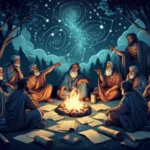The moon, with its silvery glow and captivating presence, has fascinated humanity for centuries, inspiring poets, scientists, and dreamers alike.
As it gracefully orbits our planet, the moon undergoes a mesmerizing transformation, revealing a captivating dance of light and shadow that has a profound impact on our lives. From the enchanting crescent that heralds new beginnings to the full, radiant orb that illuminates the night sky, each phase tells a unique story of celestial beauty and cosmic rhythms. In this blog post, we will embark on a journey through the moon’s phases, exploring the science behind its cyclical changes, the cultural significance they hold, and how these stunning transformations have influenced art, folklore, and our very perception of time. Join us as we delve into the ethereal world of the moon, celebrating its phases and the wonder they continue to inspire in all of us.
1. Introduction to the Moon and Its Significance
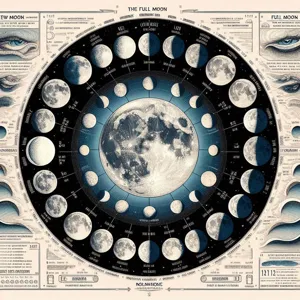
The Moon, our planet’s faithful satellite, has captivated humanity since the dawn of time. Its luminous presence in the night sky has not only guided ancient navigators but has also influenced art, culture, and mythology across civilizations. From the soothing glow that lights up a dark night to the awe-inspiring sight of a full moon casting silvery shadows on Earth, the Moon holds a special place in our hearts and imaginations.
The significance of the Moon extends far beyond its visual beauty. It plays a crucial role in the natural world, affecting tides, animal behaviors, and even agricultural practices. For centuries, farmers have relied on the Moon’s cycles to determine the best times for planting and harvesting, attuning their lives to its rhythm. In literature and folklore, the Moon often symbolizes change, mystery, and the passage of time, embodying the ebb and flow of human emotions and experiences.
As we embark on this journey through the phases of the Moon, we invite you to explore the enchanting transformations it undergoes from the slender crescent to the majestic full moon, and back again. Each phase tells its own story, reflecting the delicate dance between the Moon, Earth, and Sun. By understanding these phases, we not only deepen our appreciation for this celestial body but also connect more profoundly to the natural rhythms that govern our lives. Join us as we delve into the Moon’s phases and uncover the magic behind its beautiful transformation.
2. Understanding Moon Phases: The Basics
To truly appreciate the beauty of the Moon’s transformation, we first need to understand its phases. The Moon doesn’t emit its own light; instead, it reflects sunlight, and its position relative to the Earth and the Sun creates the stunning cycle of illumination we witness each month. This cycle is broken down into eight distinct phases, each offering a unique perspective that delights stargazers and casual observers alike.
The journey begins with the **New Moon**, a phase when the Moon is positioned between the Earth and the Sun, rendering it almost invisible to our eyes. This phase symbolizes new beginnings, setting the stage for what’s to come. As the days pass, the Moon waxes, leading us to the **Waxing Crescent** phase. Here, a sliver of light begins to grace the Moon’s surface, gently illuminating the darkness.
Continuing along its celestial path, the Moon reaches the **First Quarter** phase, characterized by a half-lit Moon. This moment is akin to a teenager coming into their own, full of potential and promise. As the Moon waxes further, it enters the **Waxing Gibbous** phase, where more than half of its surface is illuminated, creating an almost magical glow in the night sky.
The climax of the cycle is the **Full Moon**, a breathtaking spectacle where the entire face of the Moon is brilliantly lit. This phase has captivated humanity for centuries, inspiring countless myths, legends, and romantic musings. Following the full illumination, the Moon begins its descent into darkness, transitioning into the **Waning Gibbous** phase, where the light starts to wane but remains captivating.
Next, we witness the **Last Quarter**, another half-lit appearance, signaling the Moon’s gradual retreat from the spotlight. The final phase is the **Waning Crescent**, where only a delicate crescent remains visible, heralding the approach of the New Moon once again.
Understanding these phases not only enriches our appreciation for the Moon but also connects us to the natural rhythms of our universe. Each phase tells a story, inviting us to pause, reflect, and marvel at the celestial dance that has fascinated humanity since time immemorial.
3. The Science Behind Moon Phases: How They Occur
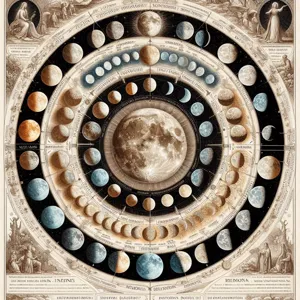
To truly appreciate the beauty of the Moon’s phases, one must first understand the fascinating science that governs their occurrence. The Moon, Earth’s loyal satellite, undergoes a series of transformations throughout the month, creating a mesmerizing display in the night sky. These phases are the result of the interplay between the Moon’s position, the Earth, and the Sun.
At its core, the phenomenon of moon phases is a matter of geometry. As the Moon orbits the Earth, it reflects sunlight at varying angles, giving rise to the different phases we observe. The cycle begins with the New Moon, when the Moon is positioned between the Earth and the Sun, causing the illuminated side to face away from us. This marks a period where the Moon is virtually invisible in the night sky, inviting the anticipation of its re-emergence.
As the Moon continues its orbit, it gradually shifts to the First Quarter phase. Here, half of the Moon’s surface is illuminated, creating a stunning semi-circular shape that is easy to recognize. This phase is often celebrated for its clarity, as it symbolizes a time of growth and potential.
The transition continues to the Full Moon, where the entire face of the Moon is illuminated, casting a silvery glow that captivates stargazers. This phase is often associated with folklore, rituals, and a sense of magic, as the Moon appears at its most glorious. Following the Full Moon, the light begins to wane, leading us back to the Last Quarter phase, where again only half of the Moon is visible but in reverse orientation.
Finally, we return to the New Moon, completing the lunar cycle. Understanding this intricate dance of celestial bodies not only deepens our appreciation for the Moon but also connects us to the larger rhythm of the cosmos. Each phase, whether it be waxing or waning, serves as a reminder of the natural cycles that govern our world, inspiring awe and curiosity in all who gaze skyward.
4. The Eight Primary Phases of the Moon
The Moon’s transformation is a captivating spectacle, comprising eight primary phases that each tell a unique story in the celestial dance between Earth, the Moon, and the Sun. Understanding these phases not only deepens our appreciation of the Moon’s beauty but also connects us to the rhythms of nature.
1. **New Moon**: The journey begins with the New Moon, a phase where the Moon is positioned between the Earth and the Sun, rendering it nearly invisible to the naked eye. This is a time of new beginnings and potential, as the dark sky invites stargazers to reflect and set intentions for the month ahead.
2. **Waxing Crescent**: As the Moon begins to emerge, a delicate sliver of light appears, creating the Waxing Crescent phase. This phase symbolizes growth and development, much like the budding leaves of spring. It’s an ideal time for planting seeds of ideas and nurturing them into fruition.
3. **First Quarter**: Upon reaching the First Quarter, half of the Moon is illuminated, showcasing its bright, bold presence. This phase represents a time of action and decision-making, as we assess our progress and make adjustments to our plans.
4. **Waxing Gibbous**: As the illumination increases further, we enter the Waxing Gibbous phase, where the Moon appears almost full. This stage is characterized by anticipation and momentum, urging us to push forward and bring our projects to completion.
5. **Full Moon**: The Full Moon is a breathtaking sight, a luminous orb glowing brightly against the night sky. This phase represents culmination and clarity, illuminating areas of our lives that require attention. It’s a time for celebration and reflection, as we acknowledge our achievements and the efforts that brought us to this peak.
6. **Waning Gibbous**: Following the full illumination, the Moon begins to wane, entering the Waning Gibbous phase. This is a time for gratitude and release, as we begin to let go of what no longer serves us, creating space for new opportunities.
7. **Last Quarter**: In the Last Quarter phase, the Moon again appears half-illuminated but in reverse. This is a moment for introspection and evaluation, urging us to reflect on our experiences and learn from them as we prepare for the next cycle.
8. **Waning Crescent**: Finally, we arrive at the Waning Crescent, where only a thin crescent of light remains. This phase invites us to rest and recharge, closing out the lunar cycle with a sense of peace and readiness for what lies ahead.
Each of these eight phases weaves a rich tapestry of time, inviting us to observe and connect with the natural world. By tuning into the Moon’s cycles, we can find inspiration and guidance, enriching our lives as we navigate our own journeys of transformation.
5. The New Moon: A Time for New Beginnings
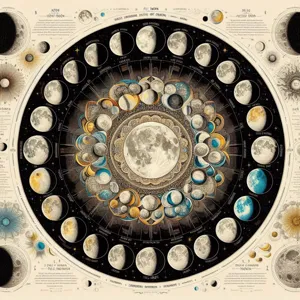
The New Moon marks a profound moment in the lunar cycle, symbolizing new beginnings and fresh starts. As the moon disappears from view—its silvery surface cloaked in shadow—there’s a sense of quiet anticipation in the air. This phase, lasting only a day, invites reflection and introspection, encouraging us to turn inward and assess our goals and aspirations.
In many cultures, the New Moon is seen as a powerful time for setting intentions. Just as the moon begins to wax and grow more visible, we too can harness this energy to manifest our desires. It’s a perfect opportunity to jot down resolutions, create vision boards, or engage in rituals that resonate with your personal beliefs. Think of it as planting seeds in fertile soil—though they may be hidden from sight, these intentions will take root and flourish as the moon waxes.
Astrologically, the New Moon is often associated with a sense of renewal, making it an ideal time to let go of the past and embrace the possibilities of the future. During this phase, the night sky becomes a canvas of darkness, allowing us to appreciate the stars and the potential they hold. The absence of the moon’s light serves as a reminder that even in moments of darkness, there is always a path forward.
As you navigate through this transformative phase, consider engaging in activities that promote personal growth. Whether it’s journaling your thoughts, meditating, or embarking on a new project, the New Moon is a celestial invitation to embark on a journey of self-discovery and reinvention. Embrace the stillness, honor the darkness, and prepare for the illuminating journey ahead as the moon begins its ascent into the next cycle.
6. The Waxing Crescent: Growth and Potential
The waxing crescent moon, often described as a delicate sliver of light against the vast, dark canvas of the night sky, embodies a sense of growth and potential that captivates stargazers and dreamers alike. Just after the new moon phase, this enchanting crescent begins to emerge, symbolizing new beginnings and the promise of what is to come.
As the moon waxes, it gradually reveals more of its illuminated surface, transitioning from a thin arc to a more pronounced shape. This transformation not only mirrors the natural cycles of growth in our own lives but also invites us to reflect on our aspirations and goals. The gentle glow of the waxing crescent serves as a reminder that just like the moon, we too can evolve and expand, embracing the opportunities and challenges that lie ahead.
Throughout history, cultures around the world have revered this phase as a time for setting intentions and planting the seeds of future endeavors. Whether it’s starting a new project, embarking on a personal journey, or nurturing relationships, the waxing crescent moon encourages us to take that first step toward realization. As its light brightens night by night, we are reminded that patience and persistence are key to growth, and that each small advancement brings us closer to our fullest potential.
So, the next time you gaze up at the night sky and spot the waxing crescent, take a moment to appreciate the beauty of its transformation and what it represents. Let it inspire you to embrace growth, nurture your dreams, and honor the potential that lies within you, just waiting to be illuminated.
7. The First Quarter: Balance and Decision-Making
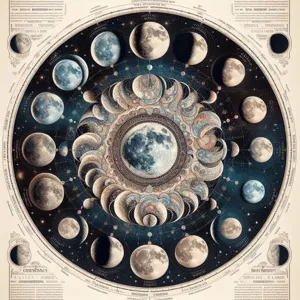
The First Quarter phase, occurring roughly a week after the New Moon, is a striking sight in the night sky, showcasing the Moon as a brilliant half-circle illuminated on its right side. This phase symbolizes a moment of balance and pivotal decision-making, mirroring the dynamic interplay between light and darkness. As the Moon waxes toward its full glory, it invites us to reflect on our own journeys and the choices that shape our paths.
During this phase, the Moon is positioned at a 90-degree angle to the Earth and Sun, creating a visual representation of equilibrium. The illuminated half serves as a reminder that just as the Moon is transitioning, we too are in a state of flux, faced with opportunities and challenges. This is the point in the lunar cycle where intentions set during the New Moon phase begin to take form, urging us to assess our progress and make crucial decisions about our direction.
Astrologically, the First Quarter is often associated with tension and growth. Just as the Moon pushes toward its full phase, we are encouraged to confront obstacles and make necessary adjustments. It prompts a period of action—whether that involves overcoming hurdles, refining goals, or taking calculated risks. Embracing this energy can lead us to clarity and renewed determination, allowing us to harness the potential of our aspirations.
As you gaze up at the Moon during the First Quarter, take a moment to appreciate its beauty and the symbolism it carries. Let it inspire you to evaluate your own journey, encouraging you to find the balance necessary to make informed decisions that will guide you toward your desired outcomes. Whether it’s a small adjustment in your daily routine or a significant life choice, the First Quarter serves as a celestial nudge to embrace change and move forward with confidence.
8. The Waxing Gibbous: Anticipation and Progress
As we transition from the first quarter to the full moon, we encounter the enchanting phase known as the waxing gibbous. During this period, the moon appears more than half illuminated but not yet fully visible, captivating skywatchers with its sublime glow. The waxing gibbous moon serves as a bridge between the anticipation of the approaching fullness and the reflective moments of the waning phases.
Visually, the waxing gibbous is a magnificent sight, casting a soft, silvery light that bathes the landscape in a tranquil hue. The shadows and craters on its surface become more prominent, creating a stunning canvas that invites amateur astronomers and enthusiasts alike to gaze through telescopes and binoculars. This phase symbolizes growth and progression, not just of the moon, but also within ourselves. It represents a time when ideas are being nurtured and ambitions are steadily advancing towards fruition.
In many cultures, the waxing gibbous is associated with manifestation and preparation. It is a powerful reminder to harness the energy of this phase to set intentions and take actionable steps toward our goals. Just as the moon grows brighter each night, we too can embrace this time to reflect on our aspirations and cultivate the momentum needed to achieve them.
As you witness the waxing gibbous, take a moment to appreciate the beauty of its transformation. Embrace the feelings of anticipation and excitement it evokes, knowing that, much like the moon, your own journey is unfolding beautifully and steadily, inching closer to the fullness of your potential.
9. The Full Moon: Celebration and Illumination
The Full Moon, a celestial spectacle that has captivated humanity for centuries, symbolizes culmination and enlightenment. As the moon reaches its fullest phase, it bathes the Earth in a silvery glow, illuminating the night sky and creating a breathtaking backdrop that invites both celebration and reflection. This radiant orb hangs majestically overhead, casting shadows and lighting pathways, inspiring poets, artists, and dreamers alike.
Throughout history, countless cultures have embraced the Full Moon as a time of festivity and reverence. Many ancient civilizations celebrated lunar cycles with rituals and gatherings, honoring the moon’s powerful presence. festivals like the Harvest Moon, which occurs in September, signal the time to gather crops and celebrate abundance, while the Winter Solstice Full Moon often marks a time for reflection and the welcoming of new beginnings.
Under the enchanting glow of the Full Moon, the world transforms. Nature seems to come alive; nocturnal creatures stir, flowers bloom in the moonlight, and the air is filled with a palpable sense of magic. For stargazers and moon enthusiasts, this phase offers the perfect opportunity to witness the moon’s surface features, such as craters and maria, with increased clarity. Many choose to venture outside, armed with telescopes or simply their curiosity, to marvel at the moon’s surface, creating a connection that transcends time and space.
But the Full Moon is not just about its visual splendor; it also holds a deeper significance. Many believe that the heightened energy during this phase can amplify emotions, making it an ideal time for setting intentions, releasing negativity, or engaging in creative pursuits. Whether it’s gathering with friends for a moonlit picnic, participating in a spiritual ceremony, or simply taking a moment to gaze up in awe, the Full Moon provides a unique opportunity to connect with the universe and with oneself.
As we explore the beauty and significance of the Full Moon, we discover that its light not only illuminates the dark but also inspires connection, celebration, and a sense of wonder in our everyday lives. So next time the Full Moon graces the night sky, take a moment to revel in its glow and embrace the magic it brings.
10. The Waning Gibbous: Reflection and Gratitude
As the moon transitions into the waning gibbous phase, its luminous glow begins to soften, casting a serene light across the night sky. This phase, which follows the full moon, is a time of reflection and gratitude, inviting us to pause and take stock of our thoughts and experiences. With three-quarters of the lunar disc still illuminated, the waning gibbous serves as a gentle reminder of the beauty of completion and the lessons learned along the way.
During this phase, the moon’s light becomes less intense, encouraging introspection and contemplation. It’s the perfect opportunity to reflect on the goals we’ve accomplished under the full moon’s brilliant glow and to express gratitude for the journey thus far. Whether it’s appreciating the small victories in daily life or acknowledging the larger milestones we’ve reached, the waning gibbous invites us to celebrate our achievements while also recognizing areas where we can grow and improve.
This period is also significant for letting go. As the moon begins its descent towards the last quarter, it symbolizes a natural cycle of release. Just as the moon sheds its light, we can take this time to release any negativity or burdens that weigh us down. Journaling or meditative practices can be particularly powerful during the waning gibbous phase, helping us articulate our thoughts and clear space for new intentions as the lunar cycle progresses.
Moreover, the waning gibbous serves as a beautiful metaphor for life’s continuous ebb and flow. Just as the moon transforms from fullness to darkness, we, too, experience phases of abundance and scarcity, joy and melancholy. Embracing this cycle can foster a deeper appreciation for the present moment, reminding us that every phase has its purpose and beauty.
So, as you gaze up at the waning gibbous, take a moment to reflect on your own journey. What have you accomplished? What are you grateful for? And what, perhaps, do you wish to release? Let the moon’s gentle light guide you through this introspective phase, illuminating the path toward your next adventure.
11. The Last Quarter: Release and Letting Go
The Last Quarter phase, often characterized by its half-lit appearance, represents a time of introspection and release. As the moon wanes from its full brightness, it invites us to reflect on our own lives and consider what we need to let go of. This phase, which occurs when the moon is three-quarters of the way through its cycle, symbolizes a natural turning point—a moment to release the old and make way for the new.
As the silvery orb hangs in the night sky, only half illuminated by the sun’s rays, it serves as a reminder that just as the moon must shed its light, we too must occasionally shed the burdens that weigh us down. Whether it’s a habit that no longer serves us, a relationship that holds us back, or even unfulfilled dreams that keep us tethered to the past, the Last Quarter calls for a conscious decision to let go.
During this phase, the energy is perfect for decluttering not just our physical space but also our emotional landscape. It’s an ideal time for journaling or meditating on what you wish to release, allowing the moon’s energy to guide you through the process. As the moon gradually fades in brightness, it encourages us to embrace the idea of impermanence and to find peace in the act of letting go.
As you gaze up at the Last Quarter moon, take a moment to honor this transformative phase. Consider what you can release to create space for new growth and opportunities in your life. Just as the moon will soon begin its journey toward renewal, so too can you embark on a path of rejuvenation and clarity, empowered by the beauty of the night sky.
12. The Waning Crescent: Preparation for Renewal
As the moon transitions into the waning crescent phase, it gracefully retreats from its luminous full form, leaving behind a delicate crescent shape that hangs in the night sky like a silvery sliver of hope. This phase, which occurs just before the new moon, is marked by a gentle dimming of light, symbolizing a time of reflection and introspection. The waning crescent is not merely an astronomical event; it serves as a reminder of the cyclical nature of existence and the beauty that lies in letting go.
During this phase, the moon appears to be slowly disappearing, casting a soft glow that illuminates the night with an ethereal quality. Shadows deepen, and the landscape takes on a more mysterious ambiance, inviting stargazers to pause and contemplate. The waning crescent encourages us to consider what we might need to release in our own lives—old habits, lingering doubts, or unfulfilled goals. It is a period ripe for decluttering both the physical and emotional spaces we inhabit.
As we gaze up at the waning crescent, we are reminded of the importance of preparation for renewal. Just as the moon prepares for its rebirth with the coming new moon, we too can take this time to assess our intentions and set the stage for new beginnings. Journaling, meditating, or engaging in creative pursuits can be particularly fulfilling during this phase, allowing us to channel our thoughts into a productive outlet.
In essence, the waning crescent is a gentle nudge from the universe to embrace the quiet moments of transition. With its serene beauty, it invites us to appreciate the subtle changes around us and within ourselves, offering a sense of calm as we prepare for the cycle of renewal that lies ahead. As the moon fades into darkness, it whispers promises of light and growth, reminding us that every ending holds the seeds of a new beginning.
13. Cultural Significance of Moon Phases Across Civilizations
The moon’s phases have long been a source of fascination and inspiration across cultures and civilizations, woven into the very fabric of human history. From the ancient Sumerians to modern societies, the moon has profoundly influenced myths, calendars, rituals, and art.
In many indigenous cultures, the lunar cycle is revered as a powerful symbol of the natural world, representing cycles of life, death, and rebirth. For instance, the Native American tribes often used the phases of the moon to guide their agricultural practices, with each phase signaling the ideal time for planting or harvesting. The full moon, in particular, was celebrated with various ceremonies, believed to bring abundance and prosperity.
Across the globe, the moon has also played a pivotal role in religion and spirituality. In Hinduism, the waxing and waning of the moon are closely linked with the festivals of Karva Chauth and Diwali, where the full moon signifies the culmination of rituals and the blessings of prosperity. Meanwhile, in Islamic tradition, the lunar calendar dictates the timing of Ramadan, as the sighting of the crescent moon marks the beginning of the holy month.
The moon’s phases have inspired countless works of art and literature, from the haunting verses of Shakespeare to the captivating paintings of Van Gogh. The serene glow of a waxing crescent or the haunting beauty of a waning gibbous has prompted artists and poets to capture the essence of the moon’s transformations, reflecting human emotions and experiences.
Even in modern times, the moon continues to hold cultural significance. Many societies celebrate the full moon with festivals, gathering communities together under its luminous glow. In Asian cultures, the Mid-Autumn Festival celebrates the harvest moon with lanterns, mooncakes, and familial reunions, reinforcing the moon’s role as a symbol of unity and gratitude.
Exploring the cultural significance of the moon’s phases reveals not just our historical relationship with this celestial body but also highlights a universal connection to nature that transcends time and geography. As we continue to gaze up at the moon, we are reminded of the stories, traditions, and meanings attributed to its ever-changing face, a testament to our enduring fascination with the night sky.
14. Observing the Moon: Tips for Stargazers
Observing the Moon can be a mesmerizing experience, allowing stargazers to engage with our closest celestial neighbor in a profound way. To make the most of your lunar observations, here are some tips that will enhance your stargazing adventures.
**1. Choose the Right Time:** The Moon’s phases offer varying viewing experiences. For detailed observations of the lunar surface, aim for the days just after the New Moon or just before the Full Moon. During this time, the shadows cast by the sun on the craters and mountains provide stunning contrasts, revealing intricate details that are often lost in the bright light of a Full Moon.
**2. Find a Dark Location:** Light pollution can significantly hinder your ability to see the Moon’s finer features. Seek out a location away from city lights, such as parks or open fields. Not only will the Moon appear more vibrant, but you’ll also enjoy a clearer view of the surrounding stars and constellations.
**3. Use Binoculars or a telescope:** While the Moon is visible to the naked eye, using binoculars or a telescope can bring its craters, valleys, and maria (the dark, flat plains) into sharp relief. For beginners, binoculars are a great starting point due to their portability and ease of use. As you become more experienced, consider investing in a telescope to unlock even deeper details.
**4. Keep a Moon Journal:** Documenting your observations can deepen your appreciation for the Moon’s transformations. Sketch its phases, note the details you see, and track how the landscape changes over time. This practice not only enhances your observational skills but also creates a personal archive of your lunar journey.
**5. Stay Informed:** Familiarize yourself with lunar terminology and features. Websites, apps, and books dedicated to lunar observations can provide valuable information about what to look for on specific nights. Knowing the names of prominent craters and seas can make your observations more engaging and educational.
**6. Embrace the Atmosphere:** The experience of observing the Moon is not just about the celestial body itself; it’s also about the environment around you. Take a blanket, invite friends or family, and make an evening of it. Share stories, enjoy the serenity of the night sky, and let the beauty of the Moon ignite your sense of wonder.
By following these tips, you’ll not only enhance your observation skills but also foster a deeper connection with the Moon and the universe. So grab your binoculars, find a quiet spot, and embark on your lunar adventure!
15. Conclusion: Embracing the Beauty of the Moon’s Transformation
As we conclude our celestial journey through the captivating phases of the Moon, it’s essential to embrace the beauty of its transformation and the profound impact it has on our lives. The Moon, with its ever-changing visage, serves as a reminder of the cycles of life, reflecting the ebb and flow of our own experiences. From the delicate crescent that hints at new beginnings to the radiant full Moon that bathes the night in silvery light, each phase invites us to pause and appreciate the wonders of the universe.
The Moon’s transformation is not merely a scientific phenomenon; it is a source of inspiration, creativity, and contemplation. Poets and artists have long drawn from its enchanting presence, capturing its essence in countless works that resonate with our deepest emotions. As we look up at the night sky, we are reminded that just like the Moon, we too go through cycles of growth, change, and renewal.
In embracing the beauty of the Moon’s phases, we find an opportunity for reflection and mindfulness. Each cycle encourages us to connect with nature, celebrate the rhythms of life, and acknowledge the small moments of magic that often go unnoticed. Whether you choose to observe the Moon with friends on a clear night or meditate under its glow, take a moment to appreciate this celestial wonder and the intricate dance it performs in the cosmos.
As we close this exploration of the Moon’s phases, let us carry forward the lessons it imparts: that change can be beautiful, that every phase has its purpose, and that there is always light, even in the darkest of times. So, the next time you gaze up at the night sky, let the Moon remind you of the beauty that surrounds us and the transformative power inherent in every moment.
As we conclude our journey through the mesmerizing phases of the Moon, we hope you’ve gained a deeper appreciation for this celestial body that has captivated humanity for centuries. From the slender crescent that whispers of new beginnings to the luminous full Moon that illuminates our nights, each phase tells a unique story of transformation and wonder. Whether you find solace in stargazing or inspiration in lunar cycles, understanding the Moon’s phases allows us to connect more profoundly with the rhythms of nature and the universe. So, the next time you gaze up at the night sky, take a moment to reflect on the beauty and magic of the Moon’s journey—an ever-changing reminder of the constancy of change itself. Thank you for joining us on this enlightening exploration, and may your nights be filled with wonder and inspiration under the glowing Moon.



